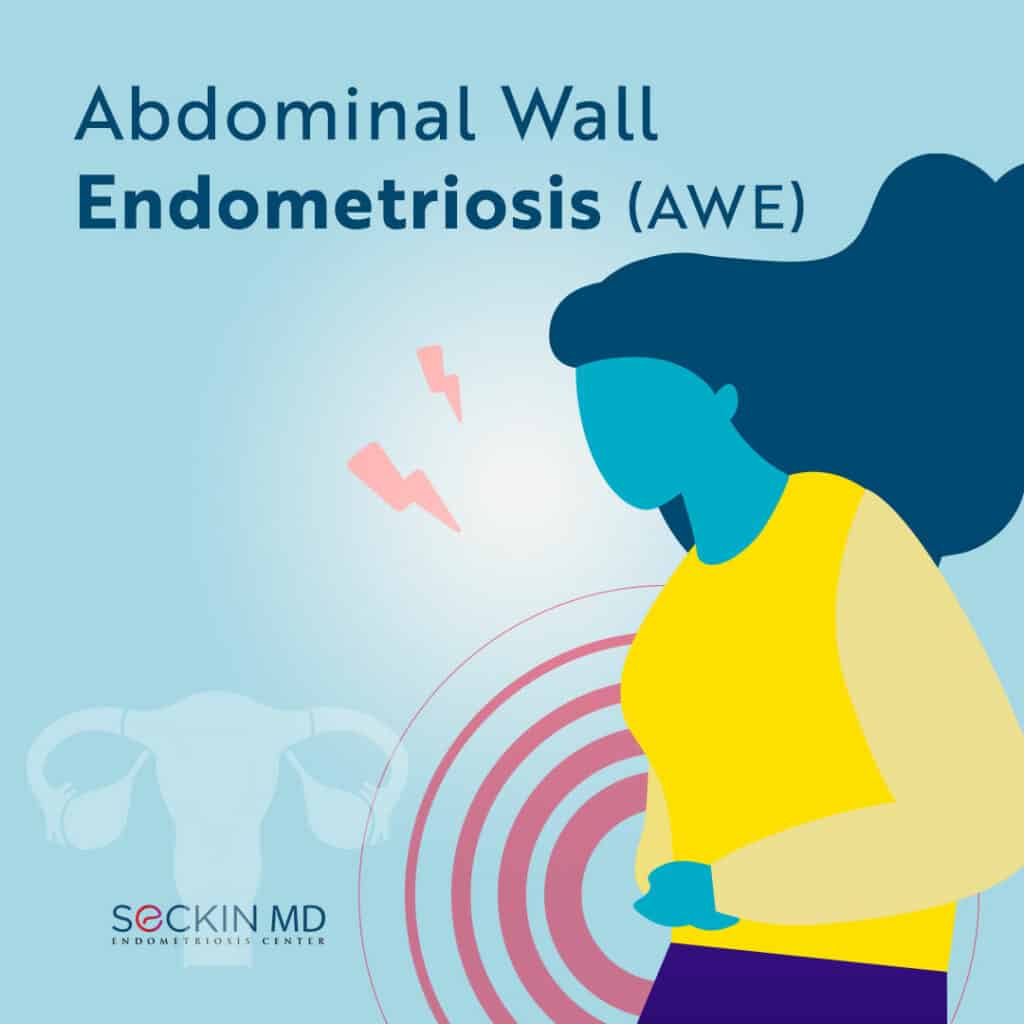
Endometriosis is endometrial glands that resemble the inner lining of the uterus found in other parts of the body. Endometriosis most commonly occurs in the pelvic area but can also affect extra-pelvic areas such as the bladder, large and small bowel, thorax, and diaphragm. One rare presentation of endometriosis is in the abdominal wall.
About the abdominal wall
The abdominal wall is a complex organ that has several vital functions. These include protecting the abdominal organs, maintaining their anatomical position, increasing the pressure inside the abdomen, and expiring air. The abdominal wall has two muscle groups. These include two vertical muscles in the midline and three lateral flat muscles stacked upon each other. The rectus abdominis is an important vertical muscle that prevents herniation in the abdomen and stabilizes the pelvis during movement.
Prevalence of abdominal wall endometriosis
Abdominal wall endometriosis is rare. Research suggests its incidence to be between 0.03% to 1.5%. However, this may be an underestimate, and reported cases have been increasing with the rising number of Cesarean sections.
Get a Second Opinion
Our endometriosis specialists are dedicated to providing patients with expert care. Whether you have been diagnosed or are looking to find a doctor, they are ready to help.Our office is located on 872 Fifth Avenue New York, NY 10065.
You may call us at (212) 988-1444 or have your case reviewed by clicking here.
Causes
The exact etiology of AWE is unknown as it can present spontaneously (without prior surgery or prior diagnosis of endometriosis) or after uterine or abdominal trauma. During a Cesarean section, the endometrial cavity is breached. Therefore, there can be potential for the development or transfer of existing endometrial lesions into the abdominal wall. The most common risk factor for AWE is Cesarean section, but others include abdominal surgery such as laparoscopy and laparotomy and high Body Mass Index (BMI).
In the abdominal wall, endometrial lesions develop in the rectus abdominis muscle and in the dermis of the abdomen usually due to iatrogenic transfer during surgery. This implantation of endometrial lesions can occur in three positions within the muscle fascia: superficial, intermediate, or deep.
Endometriosis that develops near the incision site of a Cesarean section is called C-section scar endometriosis. Sometimes, Cesarean sections may result in defects in the inner uterine wall and endometriosis lesions may grow in these scars. This is called isthmocele endometriosis.
The concept of retrograde menstruation does not explain abdominal wall endometriosis well. The combination of several endocrine and inflammatory factors, as well as estrogen exposure and angiogenesis in these lesions, is more likely the cause of this presentation of the disease.
Symptoms
Pain in the area where a prior Cesarean scar is present is one of the most common symptoms of abdominal wall endometriosis. Patients often complain of pain and a palpable mass at the site of the lesions. This pain is generally cyclic and is more intense during the first two days of menstruation. However, the pain may not always correlate with the menstrual cycle.
Skin changes such as discoloration or hyperpigmentation in the abdominal wall may also occur during menstruation. The collection of blood in the rectus abdominis muscle may also occur in some cases.
Diagnosis
Computerized tomography (CT), ultrasound, and magnetic resonance imaging (MRI) are useful to identify and assess the nature of abdominal wall endometriosis lesions.
Ultrasound is generally the first step in the diagnosis of this condition as it is the least expensive or invasive. If it is nondiagnostic, an MRI can better visualize smaller lesions. The lesions in the abdominal wall appear isoechoic or hyperechoic in most cases with peripheral vascularization. However, hypoechoic lesions can also occur. A CT scan, on the other hand, can help if the lesion involves the muscle or subcutaneous layer and can assist with surgical planning.
Doctors must exclude other conditions such as hernia, tumors in the abdomen, lipomas, and hematomas before confirming a diagnosis of abdominal wall endometriosis.
A biopsy and histological report can confirm a diagnosis of abdominal wall endometriosis.
Treatment
Treatment tends to be multidisciplinary depending on the severity of the AWE. At a minimum, surgery must be performed by a highly-skilled surgeon who will address the abdominal wall endometriosis and perform a concurrent laparoscopy. With AWE, there is a high likelihood of endometriosis in the abdominal cavity. Laparoscopic deep excision surgery combined with Aqua Blue Contrast (ABC)TM is the gold standard for the treatment of pelvic endometriosis.
A consultation with general surgery may be necessary in order to complete the reconstruction of the abdominal wall and prevent the formation of hernias.
Finally, hormonal treatment should be offered to minimize the risk of recurrence.
Get a Second Opinion
Our endometriosis specialists are dedicated to providing patients with expert care. Whether you have been diagnosed or are looking to find a doctor, they are ready to help.Our office is located on 872 Fifth Avenue New York, NY 10065.
You may call us at (646) 960-3080 or have your case reviewed by clicking here.
Dr. Seckin is an endometriosis specialist and women’s reproductive health advocate. He has been in private practice for over 30 years at Lenox Hill Hospital with a team of highly skilled personnel.
Dr. Seckin specializes in advanced laparoscopic procedures and is recognized for his expertise in complex cases of deep infiltrating endometriosis of the pelvis. He is particularly dedicated to performing fertility-preserving surgeries on cases involving the ovaries.
He has developed patented surgical techniques, most notably the “Aqua Blue Excision” technique for a better visualization of endometriosis lesions. His surgical techniques are based on precision and microsurgery, emphasizing organ and fertility preservation, and adhesion and pain prevention.
Dr. Seckin is considered a pioneer and advocate in the field of endometriosis.
